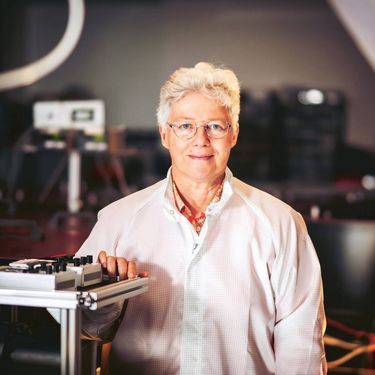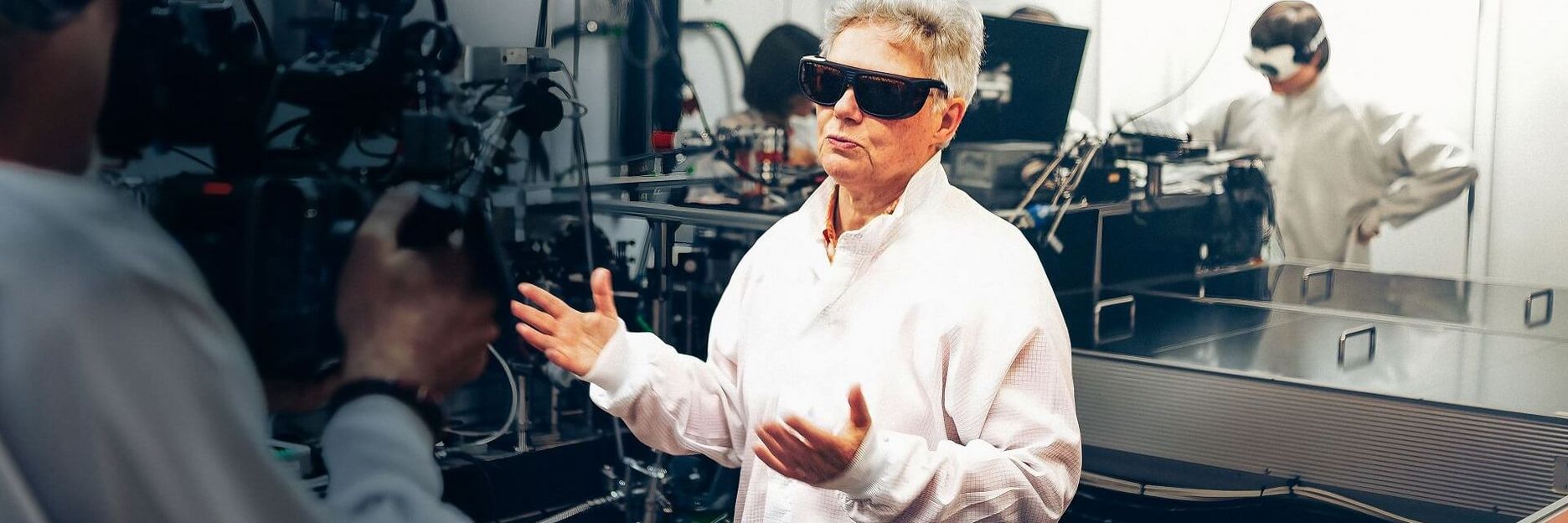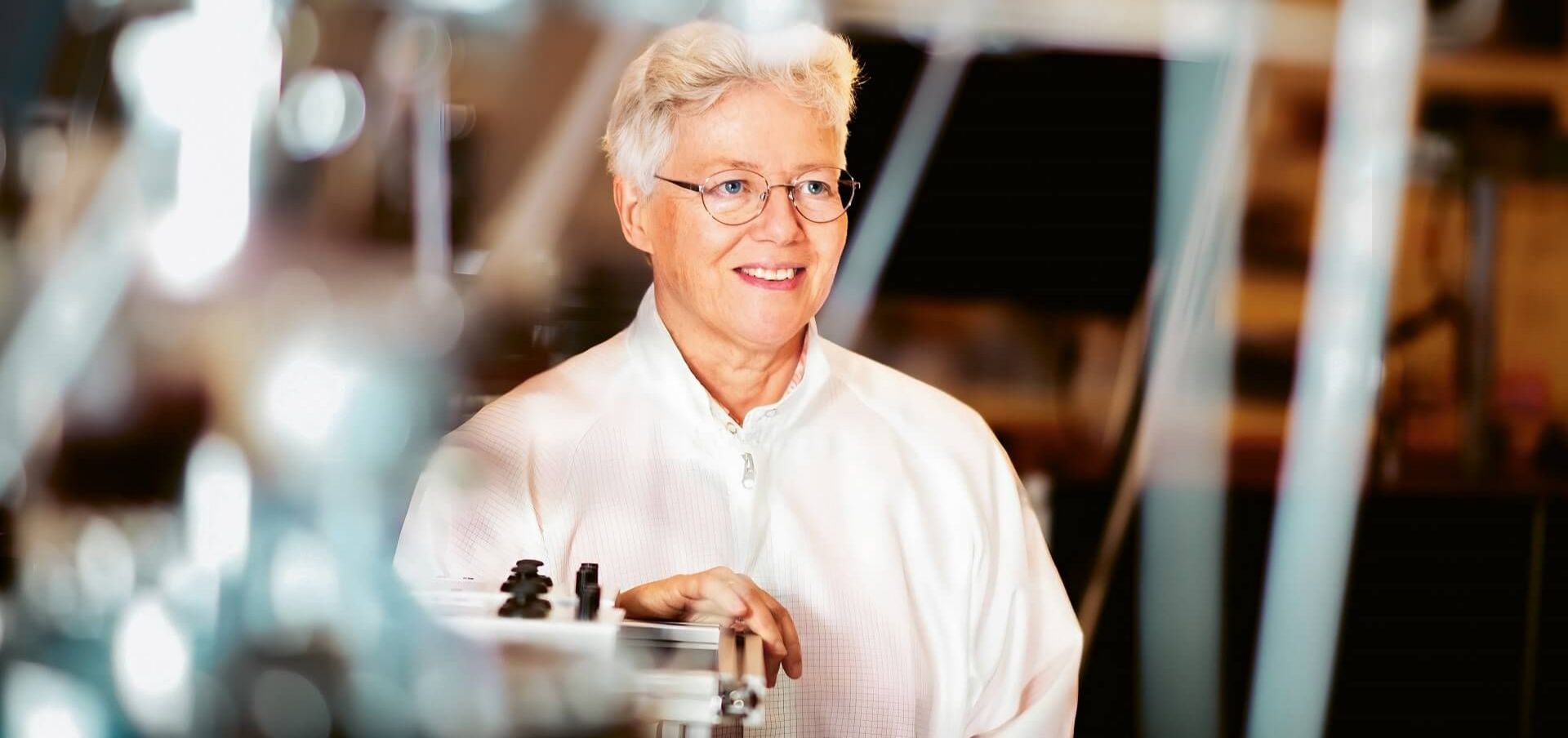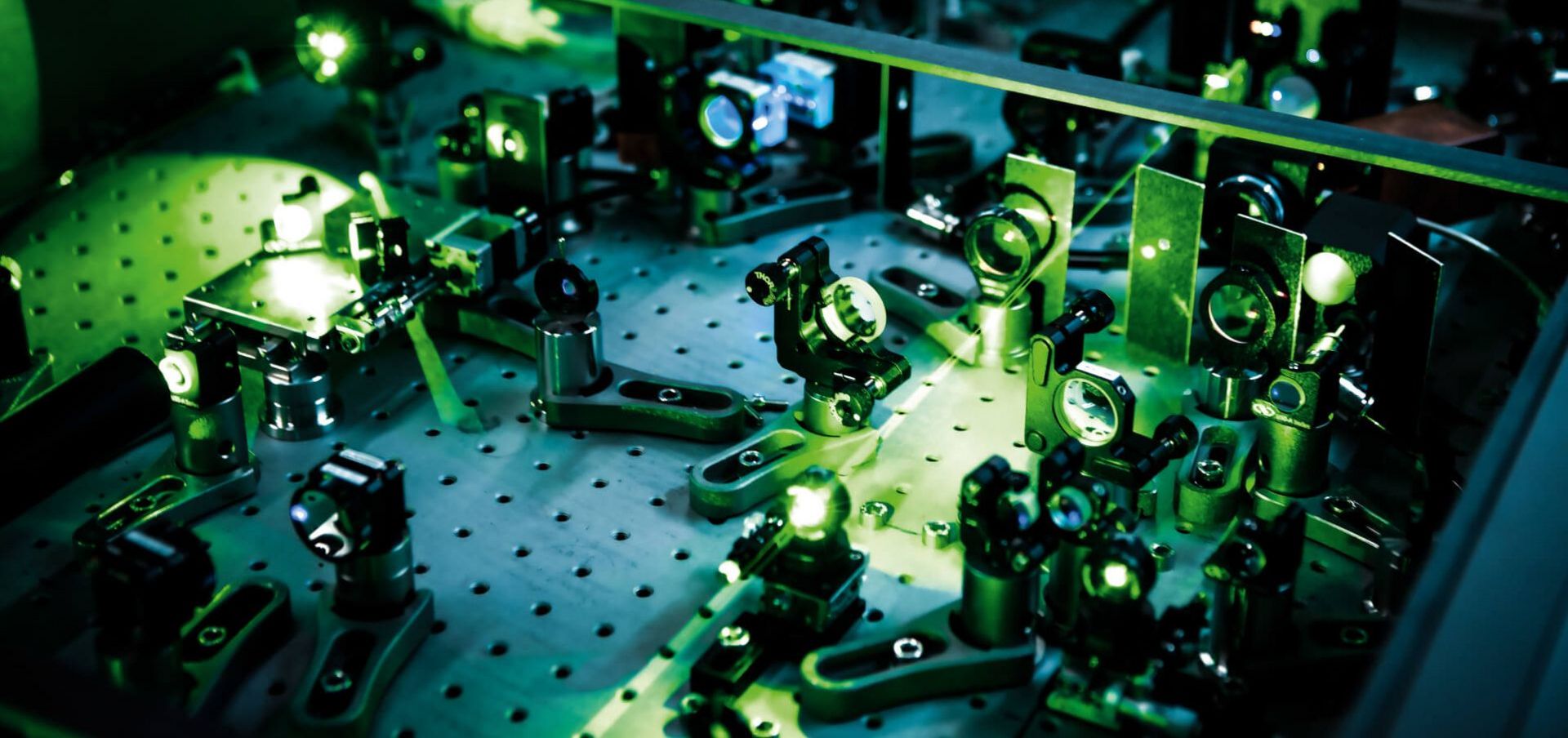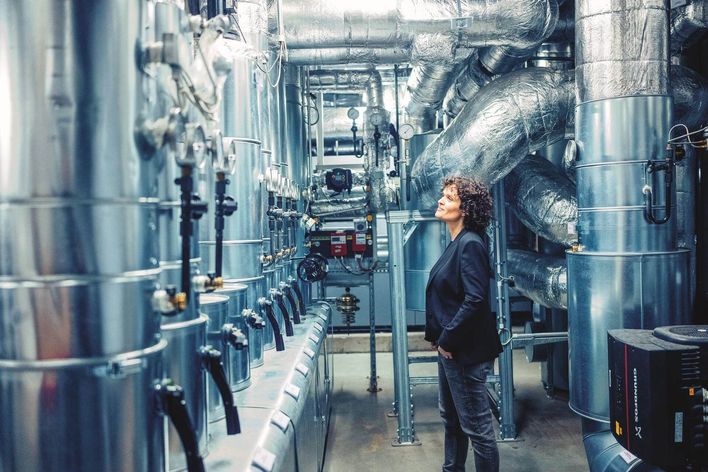Professor L’Huillier, you’re at a barbecue, and someone asks what you do for a living. What’s your answer?
L’Huillier: For situations like this, I’ve got a stock response that I’m pretty happy with. I say that I work at the interface of laser physics and atomic physics. Our team uses short – very, very short – laser pulses to illuminate and thereby film – as with the flash of a normal camera – extremely fast-moving processes; for example, those involving electrons.
When you say, “very, very short,” you mean…?
L’Huillier: I mean laser pulses that are only a couple of attoseconds long.
What’s the easiest way to picture an attosecond?
L’Huillier: You can’t. Of all the various ways of trying to picture this incredibly short span of time, there’s a comparison I sometimes use. It goes like this: one attosecond is to a single second what one second is to the total age of the universe – i.e., 14 billion years. But does that really help? I’m not so sure. Did it help you?
Well, maybe a little.
L’Huillier: We’re just going to have to get used to the idea that it can’t be grasped with our human sense of time. Fortunately, however, we don’t need to do that. That’s because we can call on the abstract methods of mathematics and scientific theory as well as practical experimentation. An attosecond is simply 10-18 seconds long. Besides, what’s much more interesting than thinking about the length of an attosecond is the question as to why we would ever want to get down to such a small timescale.
Okay. So, why do we need attosecond-length pulses?
L’Huillier: There are certain processes in nature that are so fast that we can only measure them with the help of attosecond pulses of light. The most important of these are the movements of electrons. The quicker the flash – i.e., the shorter the pulse of light – the more closely we can observe this process. Right now, my research group is still mainly filming processes in and around simple atoms, because that’s easier. But, if we can make further advances here, we’ll then be able to observe electron movements in more-complex systems – in molecules, for example. Chemical reactions take place because electrons move. One day, we’ll be able to measure these initial movements.
And then?
L’Huillier: Being able to measure something is the first step towards being able to control it. So, in the long term, the big goal is to be able to control chemical reactions at the electron level.
And this will enable…?
L’Huillier: It’s hard to give a well-defined vision. But that’s how it is with basic research.
In an experiment of 1987, you discovered something called high-order harmonic generation, a precondition of being able to produce attosecond pulses.
L’Huillier: Yes, that was a happy coincidence. But it’s the best thing ever when you discover something you weren’t expecting! That means there’s something to puzzle over. What we were really trying to do was to bombard noble gases with intensive laser light and investigate fluorescence effects. It turned out that the strongest light observed in the process was not in fact fluorescent but rather the high harmonics of the laser frequency. This discovery changed my career. With high harmonic generation, it then became possible to produce attosecond pulses. And that’s what I’m still doing now.
Is it possible at least to form a mental picture of high-harmonic generation?
L’Huillier: It is! I’ve got a comparison that works much better than the one for an attosecond and the age of the universe. If you run a bow across the string of a violin, you get not only the pure tone – the pure tone frequency – but also other frequencies as well. In music, these are known as overtones. They’re what give the sound its timbre. Overtones are also known as harmonics. Something similar happens when, under specific conditions, you expose a gas to femtosecond laser pulses. It creates new laser frequencies of a much shorter wavelength. If you will, high harmonics are the overtones of laser physics.
What can you do with high harmonic pulses of light?
L’Huillier: You can use them to generate attosecond pulses. But they’re also useful in their own right. We’re currently collaborating with a manufacturer of lithography and metrology equipment for the semicon-ductor industry. The idea is to use high harmonics to inspect semiconductor microstructures. For someone like me, who works in basic research, this a very concrete project. I’m amazed and delighted that our work has proved useful to society.
Does laser technology also benefit from your research?
L’Huillier: Absolutely. Over the past decades, our work in attosecond physics has repeatedly inspired laser manufacturers to develop new and better ultrashort pulse lasers. We too benefit, of course, from better beam sources. And the better the initial laser source, the better the high harmonics and, ultimately, the attosecond pulses. For us, this then results in further technical advances, such as new diagnostic and measuring methods in the field of USP laser technology. In other words, we’re constantly spurring each other on. But aside from these pleasant side effects, there’s also something else that is really important to me about my work.
What else is really important to you?
L’Huillier: I’m a researcher. But I’m also a teacher. That means I get to teach a bunch of bright, young people and watch how their knowledge grows. I think that’s my biggest contribution.
